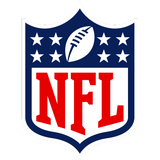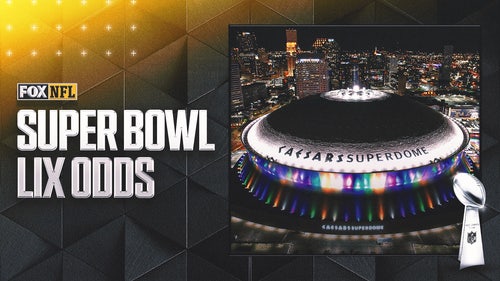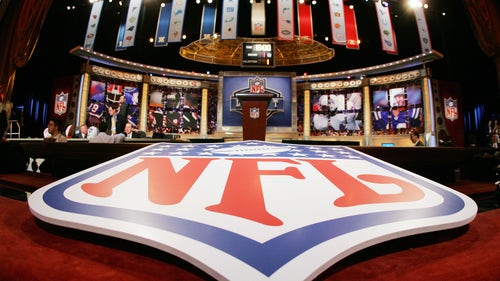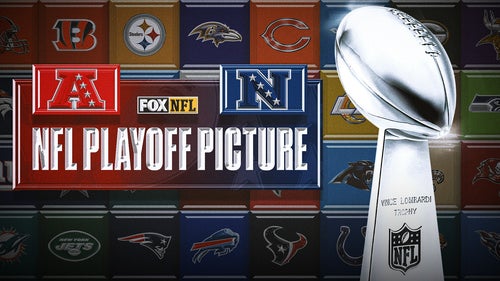
Washington Redskins: Top Free Agent Run-Stopping Defensive Tackles
The Washington Redskins defense’s failure to stop the run last year impacted not only the defense but other units on the team. What can the Redskins do this year in free agency to fix its run defense?
The Washington Redskins enter free agency seeking to shore up a defense that yielded yards and field position in droves last season. This was, in large part, a product of the defense’s maddening inability to stop the run, a glaring shortcoming which will be one of the top issues addressed by new defensive coordinator Greg Manusky.
Want your voice heard? Join the Riggo's Rag team!
Running backs frequently exploited wide open running lanes in countless levels of the team’s defense, which ranked 24th in stopping the run, 27th in yards per attempt, and 28th overall. This allowed opposing offenses to hold on to the ball for extended periods of time and use play-action passes to gash a frequently out-manned Redskins secondary. In order for the Redskins to fix its run defense issues, they’ll need to start by stocking their defensive line with players that can stop the run at the point of attack.
Dec 22, 2016; Philadelphia, PA, USA; New York Giants defensive tackle Damon Harrison (98) takes the field for action against the Philadelphia Eagles at Lincoln Financial Field. The Philadelphia Eagles won 24-19. Mandatory Credit: Bill Streicher-USA TODAY Sports
The Redskins should look to how the acquisition of Damon Harrison transformed the Giants defense, which finished last in 2015 to 10th overall overnight
One step in overhauling the run defense is the acquisition of a big-bodied interior defensive lineman in much the same way the Giants did last year with Damon Harrison. The Giants signed the former Jet’s defensive tackle to remedy issues on a run defense that finished 24th overall and 24th in yards per attempt in the prior year.
In 2016, the addition of Harrison produced immediate dividends as the Giants finished second in yards per carry and third overall in run defense. This stout run defense was critically important in improving a Giants defense that was dead last in 2015 to 10th in the span of one year.
With more than $60 million in cap space, the Redskins have an opportunity to land a defensive tackle who can replicate Harrison’s impact on the unit’s run-stopping woes. There are several candidates that can fit that bill, each of which has a price tag corresponding to his expected return-on-investment.
Jan 1, 2017; Philadelphia, PA, USA; Dallas Cowboys quarterback Dak Prescott (4) meets with Dallas Cowboys long snapper L.P. LaDouceur (91) and defensive tackle Bennie Logan (96) meet after the game at Lincoln Financial Field. The Eagles defeated the Cowboys, 27-13. Mandatory Credit: Eric Hartline-USA TODAY Sports
The economy aisle: Bennie Logan
The best bang-for-their-buck to fill that their interior defensive line is the Eagles Bennie Logan, who got left out of the spending spree the Eagles doled out to several other members of its defense last year. Logan is 6-2, 309 pounds and is only 27 years old. He can play a nose tackle in a 3-4 or on the inside in a 4-3 defense. Because he lacks elite pass rushing ability, his estimated price tag is about $6.5 million per year (per Cover 32’s Tyler Hampton).
Despite this relatively modest AAV, it’s highly unlikely that the Eagles, who’ve got less than $10 million in cap space, will be able to tag or sign Logan to a long-term deal. As a result, Logan, despite professing his desire to stay with Eagles, will probably find himself testing free agency in March. When he does, the Redskins would be wise to quickly start negotiations with him before other suitors drive up his contract demands.
Although Logan may be more of a two-down player than other defensive tackles, he would represent a dramatic improvement over anyone the Redskins have at that position. And if he can sign for about $6 million a year, his age and pedigree make him ideal for Scot McCloughan to target.
Nov 22, 2015; San Diego, CA, USA; Kansas City Chiefs nose tackle Dontari Poe (92) reacts after scoring a touchdown during the first half of the game against the San Diego Chargers at Qualcomm Stadium. Kansas City won 33-3. Mandatory Credit: Orlando Ramirez-USA TODAY Sports
Higher end retail: Dontari Poe
The Kansas City Chiefs are also another cap-strapped team facing difficult decisions on two key free agents, defensive tackle Dontari Poe and safety Eric Berry. The Chiefs enter the 2017 offseason with less than $4.3 million in cap space according to Overthecap.com. This near-empty cap account will force the Chiefs to part ways one of their two top players, if not both. If Poe is allowed to test the market, he presents the Redskins an opportunity to radically upgrade its interior defensive line.
Poe, who is only 26, is a prototypical game-changing defensive tackle. His measurables are eye-popping: he’s 6-3, weighs nearly 350 pounds and clocked a sub-five second 40-yard dash at his Combine. Gifted with lateral quickness not possessed by virtually any interior defensive linemen, he registered 10.5 sacks in 2013 and 2014 on his way to two consecutive Pro Bowl berths. But Poe only tallied 2.5 sacks since then, a decline in production that failed to earn him trips back to the Pro Bowl in 2015 and 2016.
Still, Poe, according to Spotrac, should command a five-year, $65 million deal, that averages $13 million a year. It’s uncertain whether the Redskins front office will commit that amount of cap resources to a player whose numbers have slipped the last two seasons. Indeed, the organization is all too familiar with mega contracts it struck with defensive tackles in past years – Albert Haynesworth, Dan Wilkinson, and Dana Stubblefield – that soured as quickly as the ink dried on those deals. This is particularly true where the Redskins will also have to compete with other run-stopping-deficient teams such as the Raiders and Browns for his services.
The bidding war to land Poe will more than likely push his asking price well beyond the $13 million AAV market rate set by Spotrac. If so, that would undoubtedly be a bridge that will almost be certainly too far for the Redskins brass to cross.
Sep 25, 2016; Charlotte, NC, USA; Carolina Panthers defensive tackle Kawann Short (99) runs out of the tunnel during player introductions against the Minnesota Vikings at Bank of America Stadium. Mandatory Credit: Jeremy Brevard-USA TODAY Sports
Needless markup: Kawann Short
The Carolina Panthers’ Kawann Short represents this year’s gold standard for free agent defensive tackles. Short is 6-3, tips the scales at 315 pounds, and will turn 28 next month.
More from Riggo's Rag
Unlike Philadelphia and Kansas City, the Panthers have $50 million in cap space in which to keep him in Carolina. But, according to Spotrac, Short’s market value is pegged at a five-year, $94.3 million dollar deal, which translates to a staggering $18.9 million AAV. The Panthers have, at least as of now, publicly committed to retaining Short and will resort to tagging him, if necessary.
While the Panthers will have enough cap space to accommodate Short’s tag, they are also wary that Short followed up an 11-sack 2015 season with a six-sack year in 2016. This would throw some cold water on a proposed $18.9 million deal that would take up nearly 40 percent of the team’s $50 million cap space this year.
Also complicating matters is the fact that the Panthers have other free agents to consider such as defensive ends Mario Addison and Charles Johnson. More importantly, any contract they sign with Short this year will impact fellow defensive tackle Star Lotulelei, who is playing out his fifth-year option in 2017. If Lotulelei continues his ascent as a top-drawer interior defensive lineman, he’ll be certain to use any deal Short agrees to as a benchmark for a new contract in 2018.
Nov 8, 2015; Charlotte, NC, USA; Carolina Panthers defensive tackle Kawann Short (99) sacks Green Bay Packers quarterback Aaron Rodgers (12) during the second quarter at Bank of America Stadium. Mandatory Credit: Jeremy Brevard-USA TODAY Sports
Short’s bluff that he’ll hold out if he gets tagged complicates his free agent status
Another complication is Short’s resolute stance in signing a multi-year deal. If the Panthers tag him, Short has defiantly stated that he won’t sign the tag and may, in fact, hold out for the entirety of the 2017 season (per Pro Football Talk’s Mike Florio). If so, the Panthers may face a reprise of the standoff they had last year with Josh Norman. The franchise tag for defensive tackles this year is expected to increase slightly over last year’s $13.6 million tag. Should Short hold out after being tagged, the Panthers would carry a near $14 million charge on their cap. It’s uncertain how the Panthers would respond if that happened.
But playing a game of cap-chicken with Short would make little sense when he’d boycott this upcoming season while also costing the team nearly $14 million in cap space. For this reason, the Panthers would either be forced to agree to a long-term deal or, as they did with Norman, pull the tag.
Whatever does happen, the Redskins would probably not be a serious contender to sign Short. If he becomes a free agent, he’d be able to dictate cost prohibitive demands that would almost certainly price the Redskins out from bidding on him. However, that’s the way things appear at this juncture. There’s plenty of time for developments in personnel and cap space to change between now and free agency to refocus the team’s perspective on someone like Short.
Dec 30, 2016; El Paso, TX, USA; Stanford Cardinal defensive lineman Solomon Thomas (90) celebrates with head coach David Shaw (L) after defeating the North Carolina Tar Heels 25-23 at Sun Bowl Stadium. Thomas was named MVP of the game. Mandatory Credit: Ivan Pierre Aguirre-USA TODAY Sports
Matching a free agent bargain like Bennie Logan up with a defensive tackle taken in the first round will start the overhaul of the Redskins run defense.
Free agency presents the Redskins a key opportunity to take one significant step in improving not only its run defense, but the overall production of the defense itself. By signing an interior defensive lineman like Logan, they can upgrade their defensive tackle position with relatively little cap cost. The team can then pair him up with another defensive lineman in the draft such as Stanford’s Solomon Thomas, who’s expected to be available when the Redskins are on the clock.
The Redskins could then complete its makeover of this positional unit by re-signing Chris Baker. While it’s uncertain whether the team will bring back Baker, who turns 30 this October, his return would provide the Redskins a blend of veteran talent and youth. In turn, other players such as Ziggy Hood and Ricky Jean-Francois can settle in as rotational players, which is where they more appropriately fit.
The Redskins must also populate other parts of its defense with additions in free agency and in the draft. But an eminently reasonable goal, at least now, would be to piece together a solid defense that can complement a dynamic offense. Fielding something resembling a middle-of-the-pack defense could potentially transform the Redskins into playoff contenders. The Giants were able to easily reverse its fortunes by adding Harrison and two other free agents last year. While it’s uncertain what benefits smart signings and draft picks would yield in 2017, they couldn’t be any worse than the defense’s abysmal production last season.











